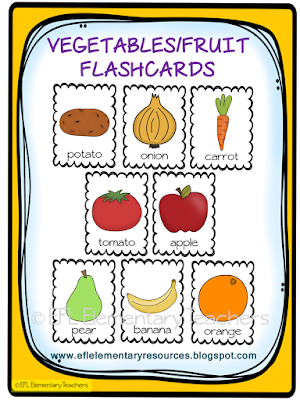More food related unit, breakfast and lunch!
Link to the resources:
The resource is also available here: https://www.bilingualmarketplace.com/products/breakfast-and-lunch-food-unit-for-kindergarten-and-elementary-efl?variant=37250563932324
I have added the resources from this blog post:
Please check it.
Grab
some bottle caps and have children place them where you tell them.
Teacher:
red bottle cap on the sandwich.
Finish
the indications.
Teacher:
Where is the blue bottle cap?
Students:
On the milk.
Teacher:
Where is the juice ?
Students:
Under the green bottle cap.
Have
them cut apart the cards and make up their own game, it can be memory, match,
board game, etc.
Worksheet elementary 2:
And a worksheet can be turned into anything. I made a mobile!
Worksheet
elementary 3: pizza shapes. More activities to do with a worksheet. Tell the
children that they are going to complete the complete the pizza slice with some
shapes (give them the shape template or have them make the shapes), But there
are some rules.
Place the cards on a pocket chart or the board. They can only color the shapes in the colors on the cards( red, blue, yellow, green, orange), they can only use the shapes on the worksheet and that there shouldn´t be more than 5 of each shape in the same color.
Have the children complete the worksheet. When finished, play BINGO!
Have the children get a marker or crayon in black, instruct them that when you name the shape with number and color , if they have it , it should be crossed out.
Teacher: Four green circles. (Use the cards to call out Bingo!)
Worksheet 4. Sort items into food or drinks.
Worksheet 5. Counting.
Food Unit Worksheet 6. This worksheet is help express likes and dislikes related to food. Students cut from magazines pictures of the food they like and don't like.
Worksheet 7.
Worksheet 8.
Found a different kind of graph making on the newsletter of the
www.Mailbox.com.
I placed the graph paper horizontally inside a sheet
protector. I tied yarn to each hole, so each child can place their own
clothespin in their choice. The file will be free, the link is above.
Sort countable and uncountable food flashcards on
the board. Students can do the same on their notebooks using the flashcard
worksheet or from magazine cutouts.
Use the flashcards to introduce how to ask
questions with countable and uncountable nouns.
Draw a grid on the board and assign a number
to each flashcard.
Have students write a sentence on their
notebooks for each number.
Review countable and uncountable nouns in a
sentence.
Number 1:
It´s a hot dog.
Number 2:
It´s pizza.
Number 7:
They´re hot dogs.
Teacher:
Number 8 !
Students:
It´s soup.
Teacher:
Number 10!
Students:
They´re sandwiches.
https://www.teacherspayteachers.com/Product/Food-Unit-for-Kindergarten-and-Elementary-BUNDLE-6666931
Please follow me! Leave your comments and requests.



























































